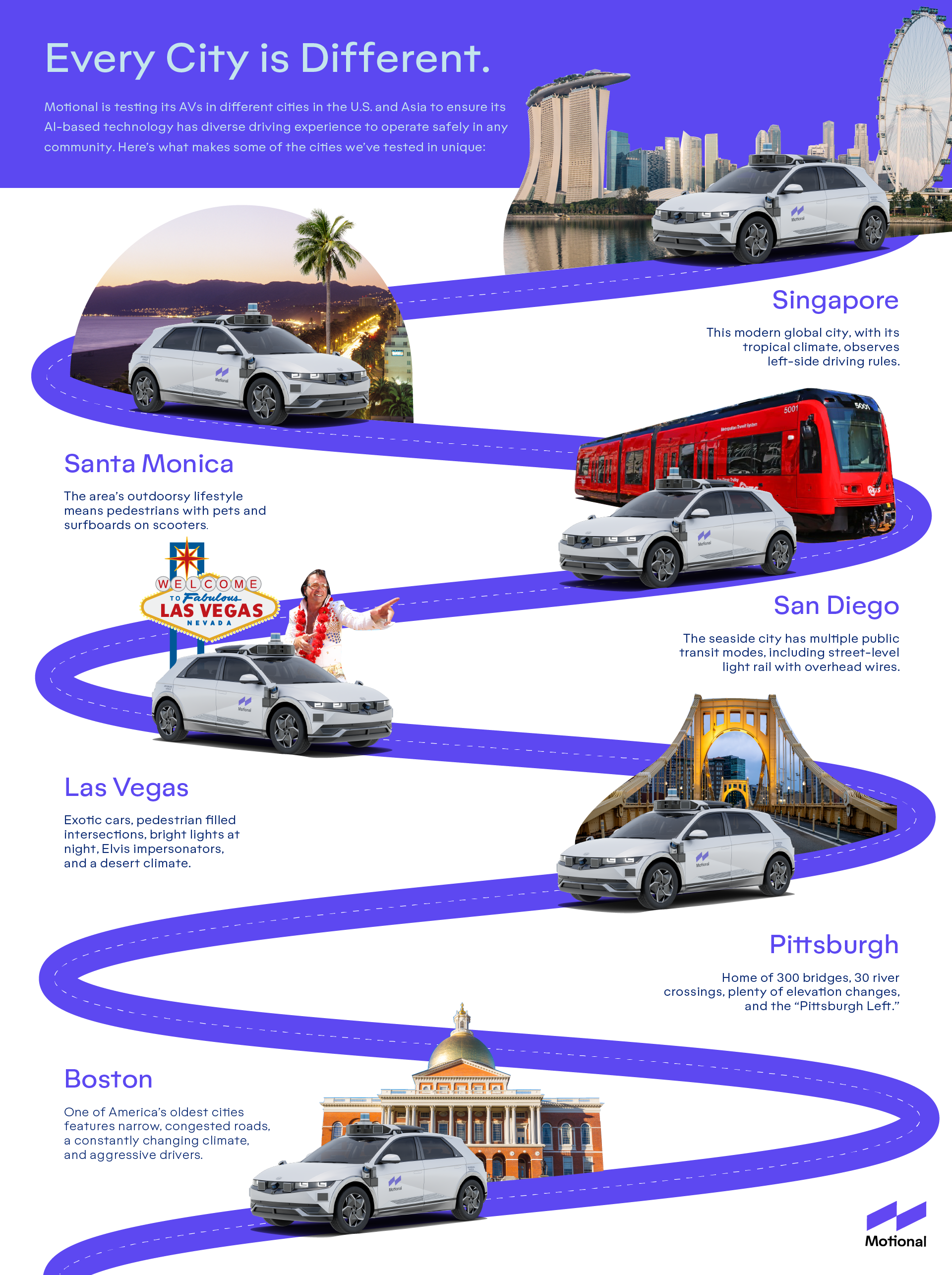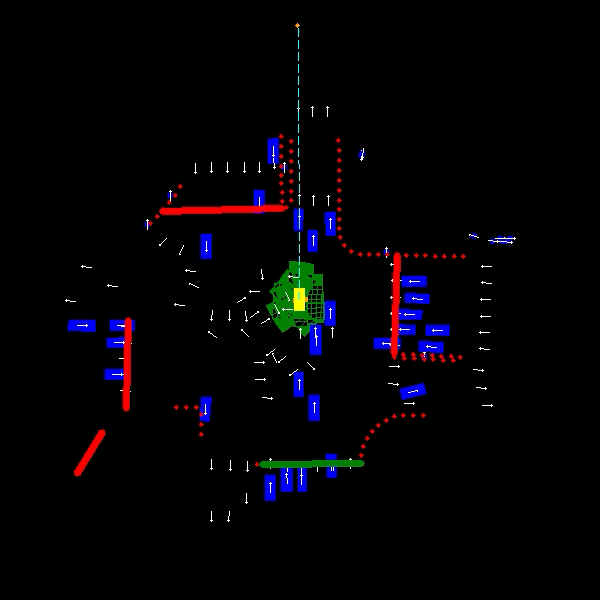The San Diego Trolley System is one of the nation’s busiest light rail networks, with its bright red streetcars familiar to anyone who lives, works, or drives in the seaside Southern California city.
“The Trolley,” however, wasn’t familiar to our Motional IONIQ 5 robotaxi. The autonomous vehicle, or AV, is accustomed to driving alongside a range of vehicles – from sedans to sports cars, box trucks to flatbeds, buses to bicycles – however, the street-level tram represented something new.
Despite the novelty, the AV’s sensors and onboard brain were able to see the trolley, classify it correctly, understand how it was moving, and navigate around it safely, just as the Motional testing team inside the vehicle expected.
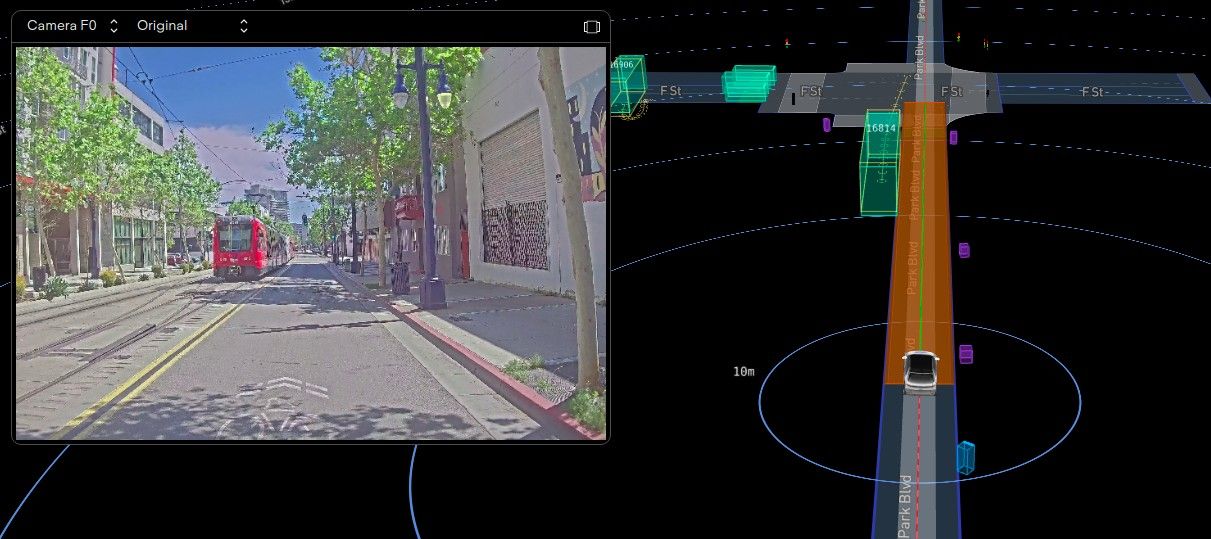
This image shows the Motional AV’s sensors and onboard computer picking up and correctly classifying San Diego’s Trolley during a recent test drive.
Adaptability and scalability
Motional engineers are looking to build an AV capable of being launched in multiple markets quickly. But every city is unique, with different streetscapes, driving customs, and infrastructure.
This means the advanced technology that controls our robotaxis must be scalable and adaptable, and not need expensive and time-consuming manual tuning each time it rolls into a new neighborhood.
Developing robust perception, prediction, and planning systems – which allow a vehicle to understand its surroundings, anticipate what is likely going to happen next, and navigate along a roadway safely – requires exposing the machine learning-based technology to a wide range of challenging driving conditions and scenarios.
That’s why on any given day, Motional robotaxis can be found taking test drives in multiple cities in the U.S., or in Asia, including Boston, Pittsburgh, Las Vegas, Santa Monica, and Singapore. That's in addition to cities like San Diego, where Motional vehicles have spent time on the road evaluating system performance. This diversity of driving environments means Motional’s robotaxis will start with a broad foundation of experience, and be able to adapt to new surroundings quickly.

Testing in the hills and valleys of San Diego
Motional robotaxis can already operate safely and autonomously when encountering a variety of common, familiar situations, such as driving down long stretches of roadway, navigating through busy intersections, pausing for pedestrians, and picking up and dropping off passengers.
However, our vehicles will invariably encounter something new, something they haven’t experienced before. What’s important to Motional teams is seeing how the AVs respond in these scenarios. This is why we test.
San Diego presented several new challenges for Motional AVs. Unlike the relatively flat surface of Las Vegas, San Diego features a series of foothills and valleys that run out from a nearby mountain range down toward the ocean. This gave our vehicles the chance to experience quick elevation changes caused by going up and over the crest of hills.
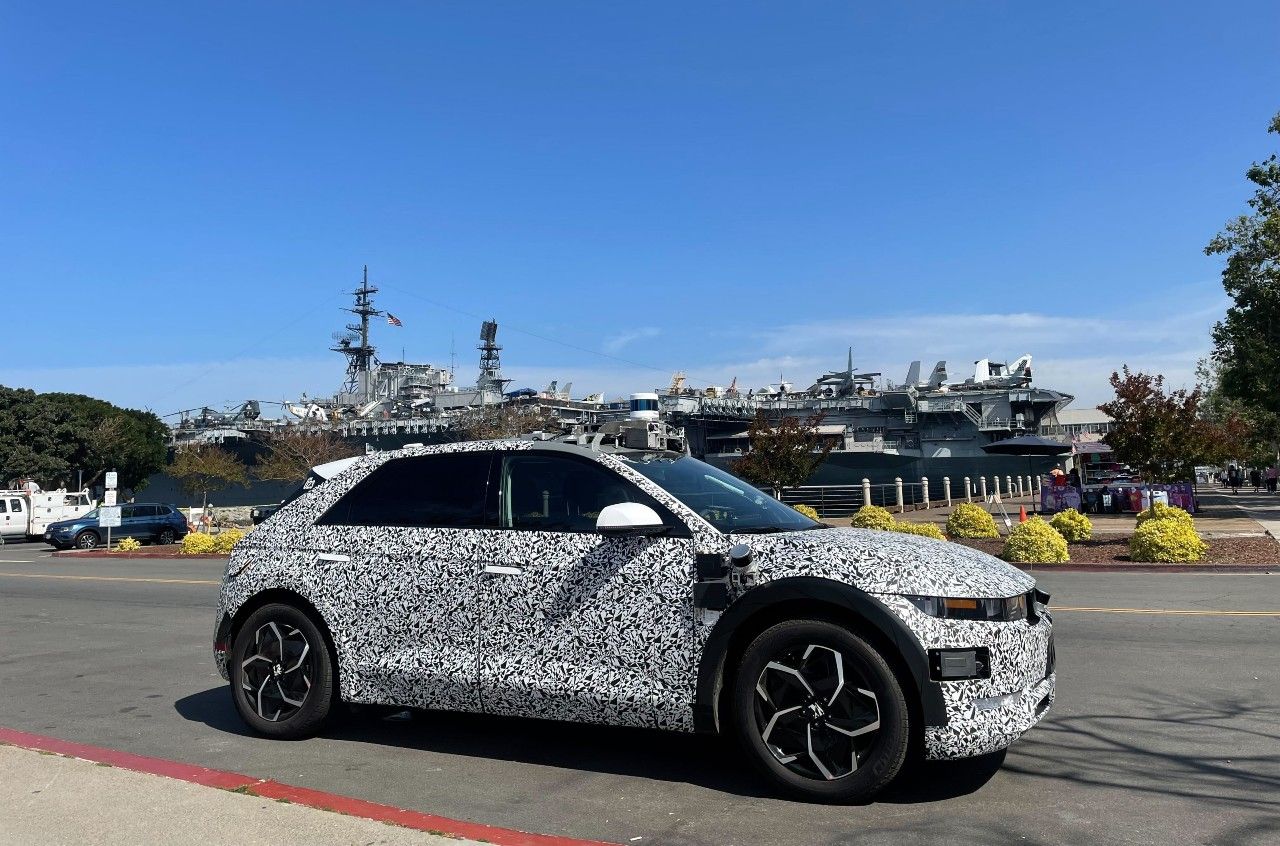
And then there’s the aforementioned “Trolley” service, with miles of tracks throughout the city. Motional engineers considered the AV’s initial encounters with the Trolley a success, as the vehicle was able to reason through this initial, unfamiliar encounter and handle it appropriately and safely.

Different is better
The modeling that constitutes the brains of Motional AVs is built upon data gleaned during tens of thousands of hours of testing on public roads in Boston, Pittsburgh, Singapore, and Las Vegas. If this seems like an odd assortment of domestic and international cities, that’s the point. Each city is different, with their own unique traffic patterns, climate, infrastructure, and even driving habits.
Boston is one of the nation’s oldest cities, with narrow streets, tall buildings, and aggressive drivers. Pittsburgh has more than 30 bridges, a hilly terrain, and is home to the infamous “Pittsburgh left.” Singapore is a more modern, global city with a tropical climate. It also observes left-side driving rules.
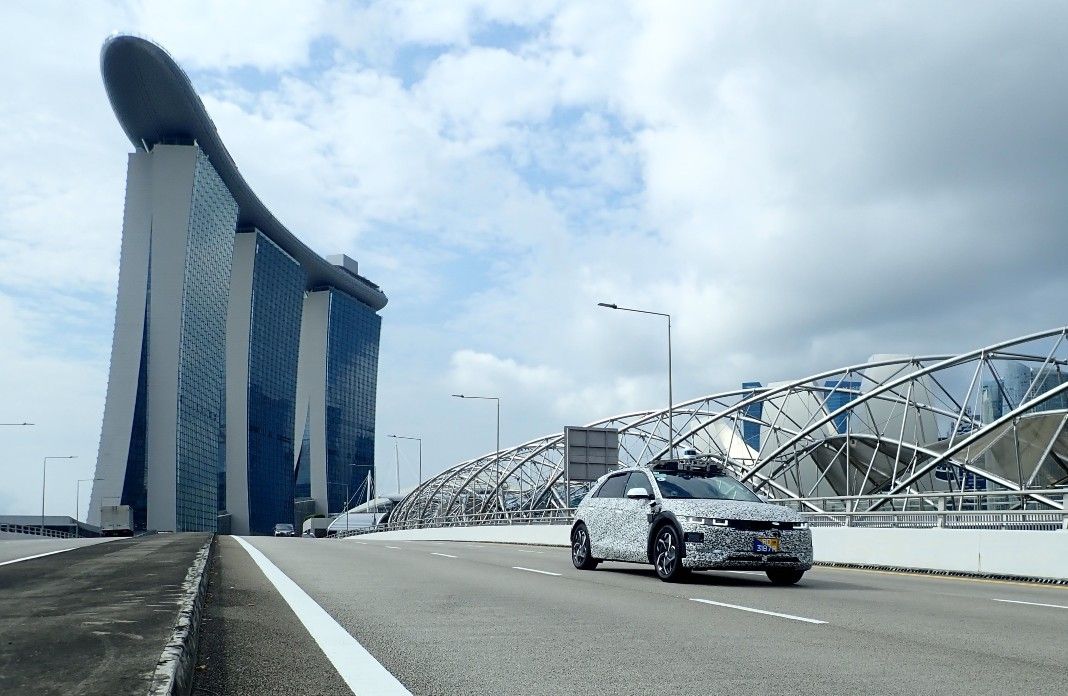
Test driving in Singapore provides our vehicles with several challenges including learning how to drive on the left-hand side.
Las Vegas, where Motional has operated a commercial robotaxi service for more than four years, also has many unique features that have helped mature our AV technology over the past couple years. The Las Vegas Strip is often packed with pedestrians crossing intersections. Our AVs frequently encounter exotic sports cars on local roadways. And the region’s plethora of hotels and casinos means there’s plenty of complex pick-up and drop-off areas to negotiate.
All these unique driving experiences – seen through an advanced sensor suite consisting of cameras, lidars, and radars, and processed by a powerful onboard computer – provided the robust, diverse data sets needed to properly train our machine learning-powered modeling.
That our AVs show an ability to quickly adapt in a new environment is good news for future Motional robotaxi passengers. The company isn’t just launching a robotaxi business in one city; it wants to provide a new way of getting around in cities all around the world. By building adaptable AV technology that can scale up quickly, Motional will be able to enter new markets faster and bring driverless benefits to more communities.
But there’s always more for our vehicles to learn. By testing in new and different cities, we can better understand the strengths and limitations of our systems, and improve where needed, to ensure our passengers will have a safe, accessible, dependable ride.
